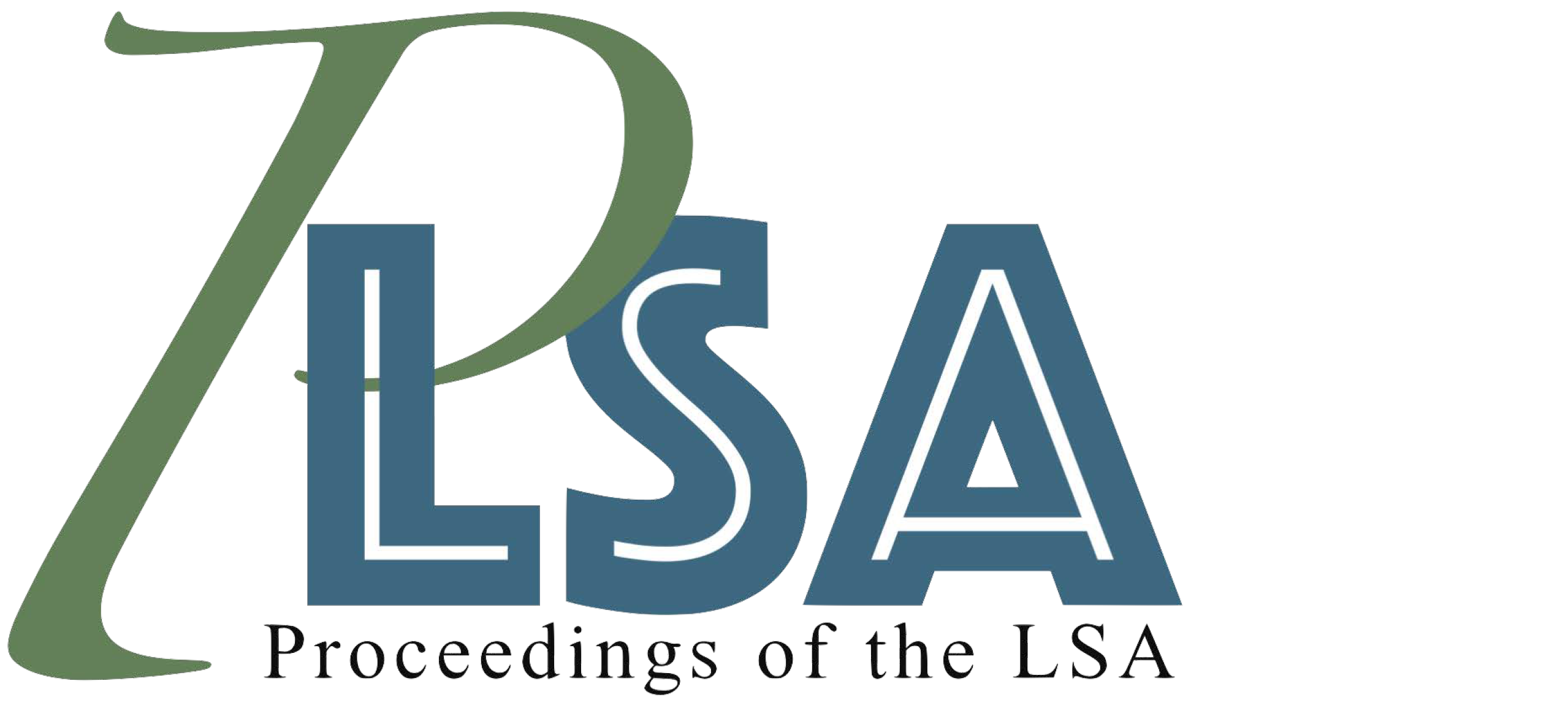Distribution of evidential markers in a Cuzco Quechua corpus
DOI:
https://doi.org/10.3765/plsa.v10i1.5899Keywords:
Evidentiality , focus, discourse connectors, Cuzco, Quechua, speaker gender, constituent markingAbstract
Due to contact, several varieties of Quechua are losing evidential markers. Using a Cuzco Quechua corpus (Macedo et al., 2022), we present the distribution of evidential markers -mi (-n,-ni), -si (-s, -sis), and -chá on discourse connectors (DCs) (Sanchez et. al., 2021) and sentence-level constituents (subject, object, verb, and adverb). To determine how DCs and constituents are marked with evidentiality, we analyze a corpus of semi-structured interviews in Quechua (N=29; 995 utterances total). 3.42% of evidential suffixes were found on DCs and 96.58% on constituents indicating that their syncretic nature (focus and evidentiality) is at play in constituents. A GLMM suggests that evidential type (-mi, -si and -chá) is predictors of DC and constituent marking. -mi is more likely to appear in both syntactic positions, while -si shows the greater shift from DC to constituents (p<0.05). Men are also more likely to mark DCs and less likely to mark constituents.
Downloads
Published
Issue
Section
License
Copyright (c) 2025 Jefferson Imbaquingo-Ramón, Liliana Sánchez, Daniel Perez, Elena Koulidobrova

This work is licensed under a Creative Commons Attribution 4.0 International License.
Published by the LSA with permission of the author(s) under a CC BY 4.0 license.
